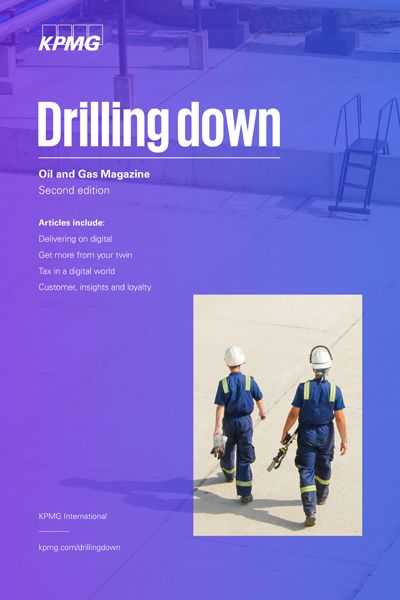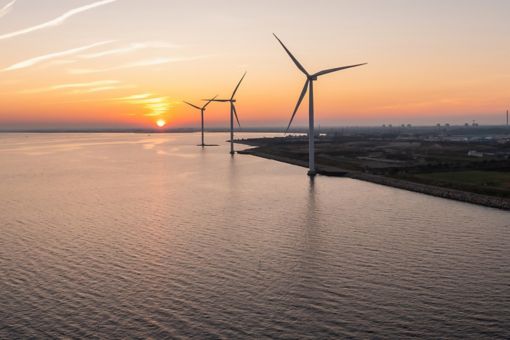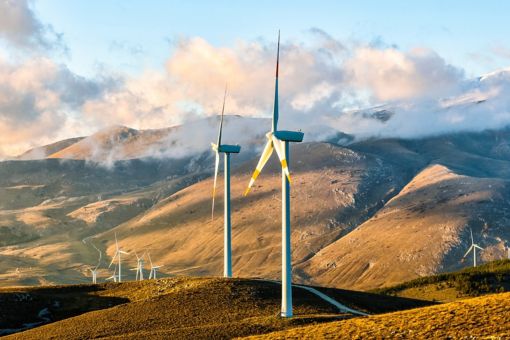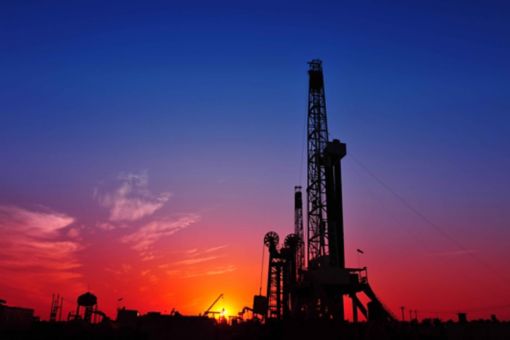You know you need to diversify and grow your downstream business if you hope to survive and thrive past 2030. To do that, you need to know your customers. Here’s how the leading oil and gas companies are transforming into customer-centric businesses.
Why do customers suddenly matter more?
The pressure on oil and gas companies to diversify away from upstream and midstream activities is undeniable.
Institutional investors and banks have been clear about their plans to reduce their exposure to the industry. Insurers are moving in the same direction (Munich Re recently announced they will no longer invest in or insure projects in the sector).[1] At the same time, governments and society are looking to the oil and gas sector to help lead the energy transition and the drive to Net Zero. Regulators are pushing for greater transparency around carbon impacts. And investors want to smooth the risk of price volatility.
There are good reasons for all the pressure. The reality is that changing customer demand and expectations are making the old oil and gas business models obsolete. Electric Vehicles sales volumes have skyrocketed, breaking the connection between consumers and gas stations. With little room for differentiation at the pumps, customers are moving to gas stations that also solve their need for convenience and value. Those offering retail, food and other adjacent services quickly capture market share.
Gone are the days when customers got to choose from three or four variants of gas and diesel. Today’s customers have multiple options, from EV charging to biofuels to hydrogen (whether that be blue, green, turquoise or pink). Understanding and adapting to customer preferences is becoming critical.
The writing is on the wall. Oil and gas companies should evolve from the product-centric business models of the past to the customer-centric business models of the future. And to do that, they should develop a better understanding of their customers.
This can be a significant challenge for many integrated oil and gas companies. Many oil and gas execs come from the upstream side. Extracting and refining the molecule was always the main focus. The rest was more about smart supply chain planning and franchising. Understanding the end customer was not an upstream priority.
Now, however, they are being asked to focus on the downstream. They are facing pressure to develop and deploy new customer-centric business models. They are trying to improve the margins of existing downstream assets and partnerships. They are working to change their ‘story’ to investors. And they recognize that their ability to do all these hinges on reasonably sophisticated capabilities, customer insights and loyalty.
Suddenly, customers matter even more. And suddenly, many oil and gas companies realize they need to know who their customers are and what they want.
The customer IS the agenda
These are not easy times for oil and gas executives. The agenda is filled with Red Alert issues and topics that influence decision-making. Regulators and policymakers are becoming more active. ESG considerations are impacting the cost of capital. Shareholder activism is pushing different agendas.
Yet, at the root of each of these agendas is the customer. Regulators and policymakers are trying to protect the customer. Customer demand is helping drive the ESG agenda. Activist investors see themselves as giving retail investors a voice. Simply put, the customer is not just ON the agenda; the customer IS the agenda. Understanding the customer has never been more critical for the oil and gas sector.
Who are you competing against?
Oil and gas companies will need to come up with some new models – and quickly. Just ten years ago, forecourts and gas stations were all about fuel. By 2030, we expect traditional carbon-based fuel will make up just 20 percent of a gas station’s revenues.[2]
One avenue focuses on convenience. The idea here is to use the forecourt to offer customers the experiences, goods and services they need (whether or not they are fueling up). It’s a massive expansion of the convenience store approach already being used in the UK, Canada, the US and other markets, to include things like luxury cafés, high-end restaurants, pharmacies and groceries. And more than just goods, adjacent services can be added, which open up new dimensions for attracting customers with everything from car maintenance, insurance/financial services and lockers to home delivery services, child play areas and even co-working space. Mobility options, charging stations and hubs would be available while you shop.
Our view suggests the forecourts of 2030 may see approximately 40 percent of their revenues flow from retail, food and beverage. We expect around 30 percent of from adjacent services and about 10 percent from mobility services. Fuel will likely make up just 20 percent – and that proportion will likely decline.[3]
Consider what that means in terms of your competition. When the forecourt was all about fuel, oil and gas companies had just a handful of real competitors in each market. For fuel, prices were adjusted in near real-time, but only quarterly or monthly on non-fuel items. Proximity and need were the main drivers of footfall. ‘Distress’ fuel purchases usually drove consumer visits.
Forecourts of the future will likely face very different competition. They may fight against retail businesses with deep customer insights, relationships and experience. These competitors know what their customers want and can adjust prices and inventory rapidly to respond. They compete based on convenience, purpose and experiences. Some may be physical competitors. More often, they will likely be digital and platform players.
Now consider what that will mean in terms of capabilities and strategic focus. The ability to extract and refine the molecule will continue to be necessary. But as that part of the business declines, what will become more important is the ability to understand, interact and serve customers. Simply put, the engineers should make room at the strategy table for the retail merchants. They will also need to transform their own thinking to put the customer first.
5 generations of customer loyalty
Oil and gas leaders already know that customer loyalty programs are a great way to capture customer data, build relationships, drive cross-selling and encourage loyalty. Most have been offering rewards or recognition programs for years.
The problem is that customer expectations of loyalty programs have changed dramatically. Loyalty programs have made generational leaps in just a matter of years. The older types of programs are now failing to interest customers. The value they deliver to oil and gas companies is diminishing. And players like Starbucks and WeChat have changed the rules and dynamics of what loyalty programs can provide.
Most oil and gas loyalty programs are 1st Gen or perhaps 2nd Gen. They are generally point-based rewards cards where customers accumulate points through fuel purchases. They aren’t usually redeemable for reduced fuel prices, but they tend to offer vouchers for discounted services like car washes. These plans can often enable some limited cross-selling and product bundling. But today’s consumers want more than just reward points or vouchers.
The more sophisticated 3rd Gen program is more of an ecosystem play. Multi-brand and tier-based, these programs let members use one card across a group of retailers. That allows for better customer engagement. But these plans tend to be more expensive for retailers and often fail to deliver meaningful customer insights about each brand.
The likes of Barnes & Noble or some luxury retail brands epitomize the 4th Gen. Customers receive privileges based on their purchases and volumes – perhaps an invitation to an exclusive fashion showing or free shipping on all packages. These loyalty programs, Amazon Prime is an example that many would be familiar with, require that customers pay to join, providing the company with an upfront revenue stream. These schemes allow retailers to drive increased engagement through value, service and content ecosystems.
The most sophisticated loyalty systems today are best epitomized by WeChat and TenCent in China. These umbrella loyalty programs put everything a consumer needs under one roof, providing enhanced convenience alongside rewards. These platforms can offer integrated experiences between the online and offline channels, allowing retailers to track behavior across the ecosystem.

Oil and gas downstream players should carefully consider how they play and who they play within this new world of loyalty programs.
Four factors to a successful loyalty program
1) Make it easy to use: Globally, more than six out of 10 consumers agree that loyalty schemes are too hard to join and/or earning rewards is too tricky.4
3) Build awareness: More than one in three consumers who do not belong to any loyalty programs say it is because they are not aware of any. 5
2) Be clear about your purpose: Customers lose interest in schemes and programs that don’t continue to deliver a clear value proposition to their lives.
4) Keep it fresh: Around half of consumers strongly agree that companies should find new ways to reward loyal customers.
Loyalty to data to insights to value
Customer loyalty isn’t just about getting closer to the customer and increasing stickiness through repeat visits and friend-and-family recommendations. But increasingly, it is about customizing for the customer and creating value by building trust, enabling personalized experiences and – perhaps most importantly – developing customer insights to engage customers profoundly. It’s these insights that are driving solid margins for retailers and helping them grow their share of the customer wallet. And it’s these insights that oil and gas companies will need to compete with new downstream business models.
Consider this: Retail giants are believed to change their prices millions of times a day. The average oil major does about 650 price changes per year. This allows retailers to maximize margins in near real time. But they can only do this because they have profound insight into what their customers want, what they are willing to spend and what value they are looking for. They know when a customer makes a distressed purchase and can play with price elasticity. And they know when a customer is just looking for the lowest price.
Loyalty programs create the data. The data holds insights. The insights deliver value – for the customer and the shareholders. Yet the route from loyalty program to value is not straight. Oil and gas companies will need to overcome significant barriers and create new capabilities to navigate that journey.
Let’s start with the data. Today, most customer data that oil and gas companies hold is stuck in siloes. Those with a mix of corporate and franchisee-owned locations face particular challenges integrating and correlating their data. To unlock the loyalty program’s value, oil and gas companies should significantly mature their data collection and integration capabilities.
Technology is also a challenge. Older POS systems at forecourts limit the amount of information that can be captured. Outdated analytics capabilities mean that the most valuable insights remain locked away in the data. Customer voice technologies are rarely used. You need the right tech stack to run a slick 3rd or 4th Gen loyalty program.
Undoubtedly, the cost of undertaking this type of data and technology transformation is high. We know of oil majors who plan to invest tens of billions of dollars into upgrading their technology stack over the next decade. Others are looking at how they might partner with existing leaders to help accelerate their progress at a more reasonable cost.
Don’t underestimate the value
Customer insights can deliver value to oil and gas companies in many ways. We’ve already talked about how insights can help inform business model development, shore up margins and drive customer experiences. Think a bit bigger, and you can quickly see how customer insights can help oil and gas companies deal with significant strategic shifts like the energy transition.
Customer insights will likely be vital to forecasting the shift from hydrocarbons to electrons. They underpin the business case for new investments. They inform decision-making around diversification into new sources of energy and new distribution models. And they will likely be critical to ensuring that your company will remain relevant to your customers as the energy transformation evolves.
From ambition to activation
You are committed to growing your downstream business. And you have a good idea of what you want to be in the future. But getting from ambition to activation can be challenging.
It will take careful thinking to navigate the options and possibilities. Instead of building your own retail capabilities, you could partner with an existing retail leader (or buy one). Your retail partner may already have a robust loyalty program and customer-centric capabilities. They may also have a world-class technology stack.
Similar decisions should be made around what processes should be automated, what can be outsourced and what should be kept in-house. However, these decisions should be made within the context of each business. Those with sizeable franchise networks may need help to build a new system that works for multiple stakeholders; partnering to secure a more agile technology platform may be the key. Those with customer loyalty programs or c-stores may want to consider the value of their existing sunk costs and capabilities. Understanding what to build yourself, what you can gain from partnering and what you purchase may be vital to building your roadmap.
Ultimately, this is about securing the right capabilities to envision and execute against your ambition. And our view suggests that moving from ambition to activation will require maturity in eight connected capabilities. These are cross-functional and apply across the operating model. Our data suggests companies investing in these are twice as likely to see an overall impact from their investments.
Each of the eight enabling capabilities is underpinned by a set of five sub-capabilities. The first step in defining a winning model is understanding your relative maturity in each sub-capability against the required maturity to deliver your winning business model. In other words, start with a sober self-assessment of the strength of your capabilities across these eight areas. Then begin to think about how you bridge the gap between where you are and where you want to be.
The bottom line is that the world has changed. Oil and gas companies have no choice but to transform and diversify. But to achieve that, they will need to gain a much better understanding of their customers.

Key takeaways
Customer-centricity is key to oil and gas company survival..
Yet competition for the customer is tight, and expectations are high.
Loyalty programs can provide important customer insights.
Oil and gas companies will need to radically rethink their downstream models and capabilities and focus on creating value from customer programs.
This will require a much more connected enterprise and ecosystem of partners.
How KPMG can help
Digital disruption and rising customer expectations create unforgiving markets where loyalty is hard-won and easily lost. If you can’t deliver what your customers want, when and where they want it, they will go to someone who can. But there is no point in creating a breakthrough customer experience if the new business model runs at a loss. KPMG teams offer services that can help you achieve profitable, sustainable growth through customer-centric thinking. This is all about getting close to your customers and staying there. KPMG firms are committed to helping drive the Oil & Gas industry forward — no matter how complex the challenge — to create enormous value for shareholders and society.
Continue reading Drilling Down #2
Contact our Energy, Customer and Technology experts
Connect with us
- Find office locations kpmg.findOfficeLocations
- kpmg.emailUs
- Social media @ KPMG kpmg.socialMedia
Explore
1 Munich RE, New Oil & Gas investment / underwriting guidelines
2 Fuel Forecourt Retail Market, KPMG International, 2020
3 Ibid
4 2019 Customer loyalty report, KPMG International, 2019
5 Ibid









